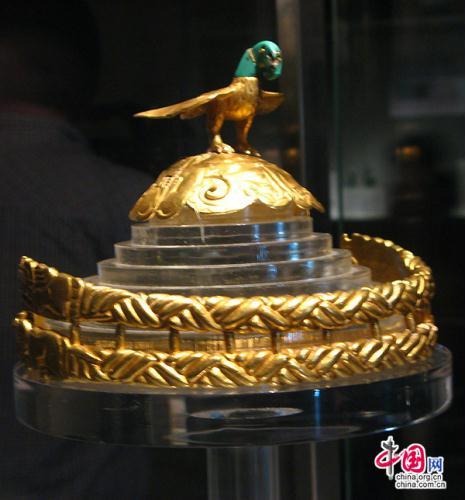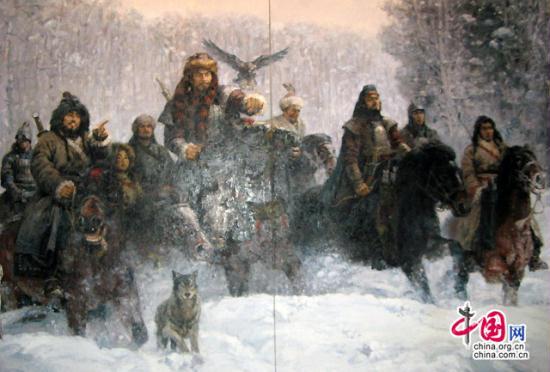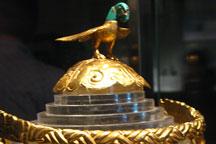The Beijing World Art Museum is using ancient cultural relics to tell a story of conflict and hard-won unity. The show takes us through the turbulent relations between the nomadic Huns and the Central Plains dynasties, many centuries ago.
Centuries-old bronzeware, pottery, jade pieces, gold and silver, and even ancient weapons.
More than 130 artifacts reveal the long road to integration between the Huns and the Central Plains dynasties. This story spans a great swath of history, from the late Warring states period to the Han Dynasty.
 |
| The Beijing World Art Museum is using ancient cultural relics to tell a story of conflict and hard-won unity. |
The Huns were an ancient nomadic people in north China. Due to their different beliefs and lifestyles, the Huns and the Han people experienced many conflicts throughout history. But there was also extensive trade, alliances were struck, resulting in the eventual blending of the cultures.
Feng Guangsheng, deputy curator of Beijing World Art Museum, said, "I think this exhibition is meaningful in many aspects. First, it gives us a clear impression of the history, the clashes and convergence of the Huns and the Central plains dynasties. Second, it makes us think about our world, because there are still conflicts and wars. I think looking at how ancient people treated each other will surely benefit us."
The exhibition is not only about cultural relics.
It also features 28 modern creations by contemporary oil painters. Some of the paintings depict well-known historical events. And some reproduce the daily lives of people living in ancient times.
 |
| The Beijing World Art Museum is using ancient cultural relics to tell a story of conflict and hard-won unity. |
Feng Guangsheng said, "The exhibition is a combination of cultural relics and modern oil paintings. These modern creations will help visitors get a deeper understanding of the history, and make it more interesting at the same time. Take this painting for example. It depicts a very famous historical event called "Zhaojun departing for the frontier". Zhaojun was a very beautiful lady. She was sent by Emperor Yuan to marry the Xiongnu Chanyu in order to establish friendly relations."
All the artifacts on display come from five museums located in Henan, Inner Mongolia, Gansu and Ningxia. The exhibition has already been held in Zhengzhou and other cities.
The Beijing World Art Museum will also invite experts to give lectures on the history of the period described in the exhibit.
Source: CCTV.com
For more information (in Chinese): Beijng world Art Museum

 Play Video
Play Video
No comments:
Post a Comment